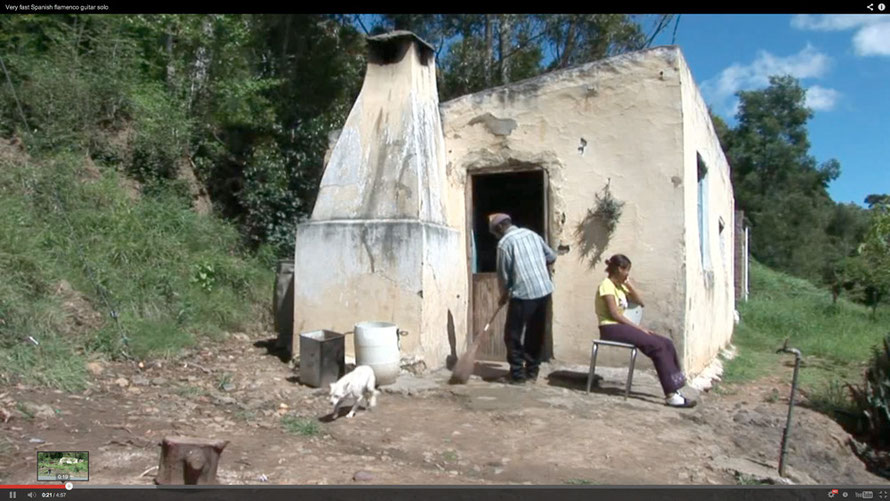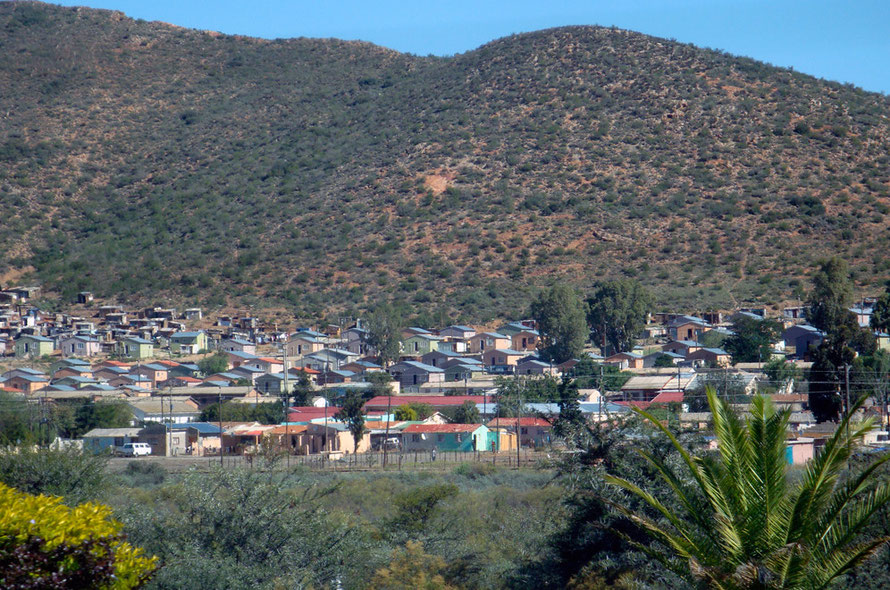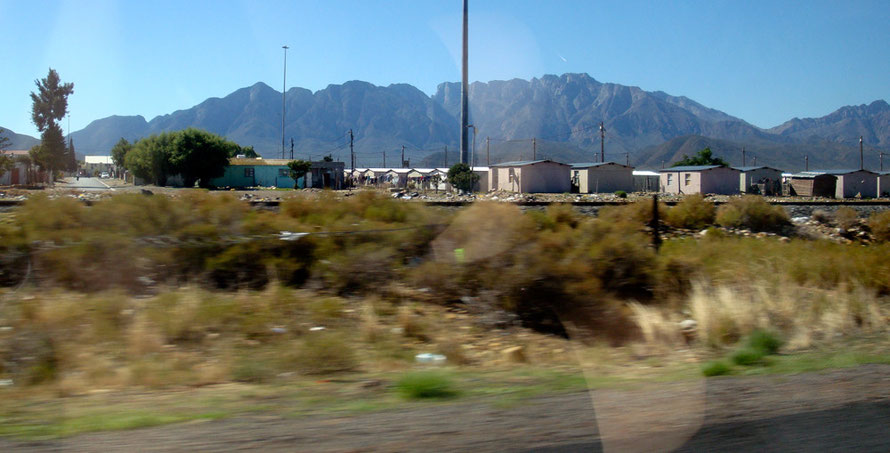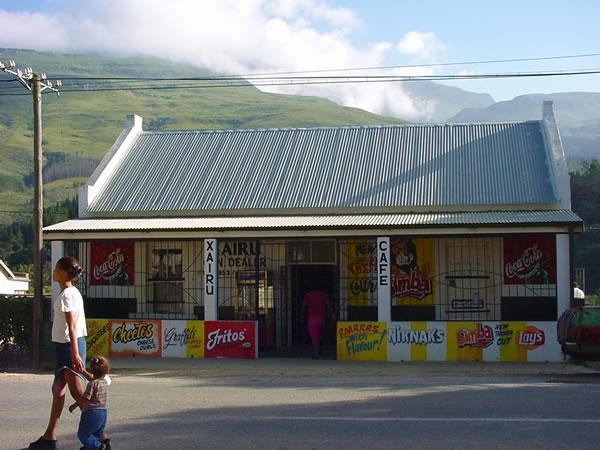VI. Land Reform and the Demand for Smallholder and Subsistence Agriculture
Land Reform and the Rural Poor
Land and agricultural reform are critical issues in South Africa and ANC governments have registered few successes against the dire needs of the rural poor. The intitial ANC government aim was to redistribute 30% of land to black owners by 2014. The process of redistribution was to be based on a ‘willing seller, willing buyer’ mechanism operating through fair market prices. By the end of 2011 only 6% of white held land had been redistributed through this mechanism.
In 2011 after more than two years in the drafting, the Department of Rural Development and Land Reform launched a Green Paper on Land Reform. The sparse, rambling 11 page paper was judged ‘a great disappointment’ by expert commentators because
‘for the most part, the Ministry has produced a document that fudges all the important questions. It fails to provide an honest analysis of the nature and shortcomings of land reform policy until now. No guidance is given as to how the state will acquire land for acquisition. No answer is given on the status of the ‘willing buyer, willing seller’ model. No clarity is given as to when, and under what condition, will the state use expropriation as a way to acquire land. […] The paper provides no policy direction on how to solve the conflicts around the tenure rights of the two main rural constituencies: the 16 million people residing under communal tenure in the ex-Bantustans and the 3 million farm dwellers living on privately-owned commercial farms. No clarity is given on how women’s rights to land can be secured. […] And no useful guidance is provided as to how the implementation of land reform is to support sustainable livelihoods. The measures that are proposed – a recapitalisation programme, and partnerships with commercial farms – already exist, are implementable only in a few cases and will not resolve the systemic and deep-seated failures of the Government to provide coherent support to smallholder farming.’
Comment on the newly released Green Paper on Land Reform
26/10/2011 by Andries du Toit
Notes on Land Reform: the PLAAS study authored by Ruth Hall, Another Countryside? Policy Options for Land and Agrarian Reform in South Africa (2009) Institute for Poverty, Land and Agrarian Studies, U
'Agriculture is a small sector of the economy, contributing just 4% of GDP, yet it is much more significant as an employer (providing the wages of about 780 000 farm employees) and as a source of food and cash income for around 4.5 million residents of former bantustans who depend, at least in part, on farming. […] Most significantly, none of our national economic accounting acknowledges the role of agriculture among so-called subsistence producers, as a source of food and income and guarantor of social welfare for poor households' (p.3).
'By the 1990s, one of the gross legacies of apartheid lay in the vastly unequal racial division of land, with 87% of the land area being legally designated for exclusive white ownership. More specifically, there were some 60 000 large commercial farms owned by whites, with a resident and dependent population of farm workers and other dwellers, while the former bantustans or ‘reserves’ remained home to about four million producers ranging from smallholder to medium-scale and from semisubsistence to commercial. Meanwhile, some 13 million people were crammed into the former homelands, making up a disproportionate share – about 70% – of the poor (May 1998) (p.4).

A large conference of civil society organisations, NGOs, political structures, labour unions, state departments, social movements, funders and academics was held in Cape Town in 2007 as part of a concerted attempt to influence a new land and agricultural reform agenda in South Africa.
The conference drew four main conclusions:
First, a central area of agreement was support for a ‘developmental state’ paradigm in which the state pursues an agrarian reform through strategic interventions to restructure economic conditions in favour of the poor, and acts to break monopoly control of agriculture [rather than limiting itself to redistributing land ownership].
Second, participants agreed that rural poverty is profoundly gendered and so any land and agrarian reform needs to confront what it means to prioritise women’s land needs and to use land reform as a measure to bring about greater gender equity [rather than reflecting prevailing gender relations around land and property ownership].
A third point of broad agreement was the need for land reform to be primarily about establishing and supporting smallholder farmers, if it is to make inroads into rural poverty [rather than simply creating a limited number of large highly capitalised farms owned by black Africans]. Consequently, new mechanisms will be needed to link small producers with markets on terms that enable them to minimise risk and accumulate surplus and to provide appropriate support such as farm inputs and credit – enabling the growth of petty commodity producers – as well as creating a welfare net for those who do not aim to scale up production and whose primary need is for settlement and farming for consumption.
Fourth, participants from across the political spectrum also sounded a cautionary note about the nature and capabilities of the state –and the key implementing institutions as they are currently constituted – and what it can be expected to ‘deliver’ (p.12).

Notes on Land Reform and Township Conditions in the Breede River Valley
A major study of rural inequality and land reform potential carried out some interesting work in townships in the Montagu-Ashton–Robertson area. It noted with regard to the Breede River valley area of the Cape Winelands that,
‘To a visitor it looks like a valley of plenty …is extremely beautiful and very rich. However, it is also an area marked by poverty and inequality. … [S]ubstantial job losses on farms have prompted widespread evictions and the mushrooming of informal settlements around small towns, where a large proportion of people are reliant on insecure, informal and seasonal employment (on farms, in the canning factories and in the towns) and on social grants. The area …epitomises the contradictions of the commercial farming sector, which has beensuccessful in providing paths to accumulation for some while entrenching poverty, underdevelopment and economic exclusion for others.’ P.166
A household survey of townships in the Breede River Valley carried out by the Institute for Poverty, Land and Agrarian Studies (PLAS) at the University of the Western Cape in 2008 that included those at Ashton and Montagu revealed the following:
‘Nearly three-quarters of respondents (72%) lived in formal housing – either a Reconstruction and Development Programme (RDP) house, an old council house or another formal house. Just 16% lived in a wooden or zinc shack.’ This varied between the townships and there was a category called ‘other’ that accounted for 12%. The survey report does not say what this ‘other’ is (p.170).
‘Most respondents (91%) live in homes connected to the electricity grid, and most (87%) had access to tap water at home, either inside or outside the house. This is a remarkable finding for residents of these poor areas: infrastructure for the delivery of basic services is fairly developed’ (p. 170). The barrier here is not so much access as cost - ‘paying for basic services seems to account for a substantial portion of cash incomes in these communities.’
What is striking is that just over half [56%] of the households reported receiving income from wage labour (regular or temporary), and the two next most frequently cited forms of income were from social grants. Nearly a third (32%) of respondents received some type of social grant [child support 29%, state pension 23% disability grant 9%]
More than a third of respondents lived in households where there had been no income from any type of employment.

72 per cent of the sample indicated that there had been times in the past year when they did not have enough to eat, usually in the winter months when there is little seasonal work on the farms or in the canning factories (p.172).
22 per cent of respondents were involved in very small scale food production and there was a clear desire (75% of respondents) to have access to small plots of land (61% of respondents wanted access to a plot of an hectare or less) to increase this potential. This is in line with much research on land reform in South AAfrica where most demand for land is for ‘smallholder production, primarily to supplement other sources of income, alongside a secure place to live, while the demand for larger plots for sizeable farming is restricted to far fewer people’ (p.176).
Access to small-holder plots could make a huge difference to the rural poor who use multiple livelihood strategies that rely on a precarious combination of social grants, seasonal jobs on farms and informal work in towns. (not quote 181)
The household survey concludes:
The demise of apartheid has not changed the conditions in the townships and shack villages that stand alongside lush green vineyards and hectares of peach and apricot orchards. P.180
The potentially significant role of land access in a multiple livelihood strategy among the many households that rely on a precarious combination of social grants, seasonal jobs on farms and informal work in towns.

The research demonstrates that there is a land need in the Breede River Winelands and that this land need, although varied, is closely related to lived realities of poverty and the desire for sustainable rural livelihoods and food security. Poor people are involved in multiple livelihood strategies and already utilise the small tracts of land available for a number of different economic activities, which range from small-scale crop production and livestock keeping to operating spaza shops.
Those expressing land needs have extremely limited scope to pursue these further through the land market, as presumed by policy. P.181
On the other hand, there is the view that agriculture in its present form is extremely socially inefficient: despite the accumulated wealth of this farming sector and improved access to global markets, its contribution to the local economy appears to be shrinking, producing fewer and poorer quality livelihoods as casualisation proceeds. Western Cape farmers are heavily indebted and changes in the production process over the past decade or more have given rise
to high and rising levels of unemployment (and underemployment) and poverty in the countryside. Nkqubela is now the fourth poorest township in the Western Cape. There are major trends of casualisation of the work force, farm evictions and ongoing violations of labour laws, in the face of competitiveness pressures and declining profit rates. P.188
Not from survey but interesting- What Hart (2002) describes as the chasms left by the spatial divides of the old apartheid towns and commercial agricultural zones are almost entirely intact. The power that white commercial agriculture, white business and tourism hold in the rural economy also remains intact. We found no clear strategy from local, provincial or national government to regulate and transform the existing way the rural economy functions in this area. (171)
For an example of the challenges of running fams in the Breede River Valley bought under the Land Reform system Wynboer.

See also this article in The Guardian in 2011 on white farmers expanding northwards from South Africa into other parts of Africa.
The mass movement is mostly organised by Agri South Africa, an association that represents 70,000 South Africa farmers. Its president, Johannes Moller, made a pitch for new deals at a conference on large-scale agriculture in Africa, held in Cairo last April. Since then, Agri SA has received offers of land from 22 African countries, says [Ruth] Hall. Along with free land come tax holidays, free rein to export produce and profits, and promises of new roads and power lines – angering local peasants who have never enjoyed such benefits.
With one-third of South Africa's white-owned farmland to be transferred to black owners by 2014 (a target that wil not be met), many white South African landowners are keen to find new territory, though most want to keep their home farms as well, says Ruth Hall, of the Institute for Poverty, Land and Agrarian Studies (PLAAS) at the University of the Western Cape.
"South Africa is exporting [not just] its farmers, but also its value chains [and values?], to the rest of the continent," she said.
To Notes on the Fruit Industry
